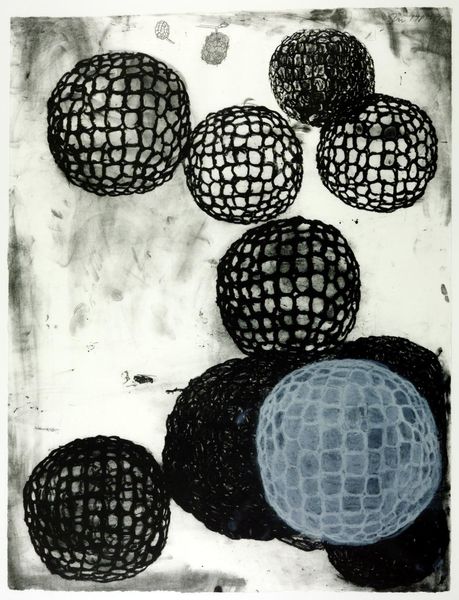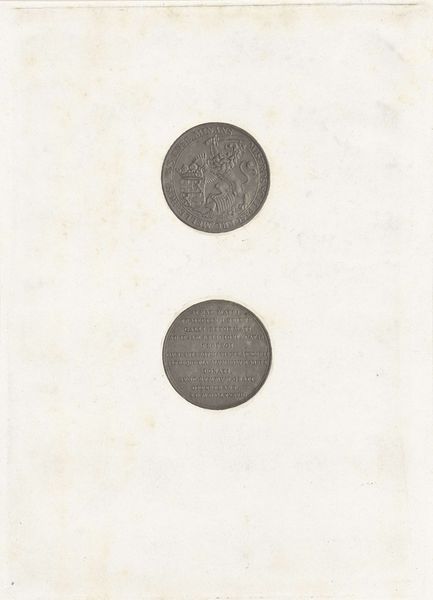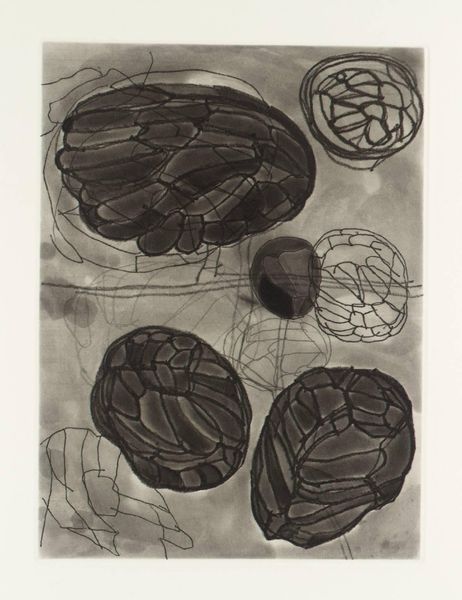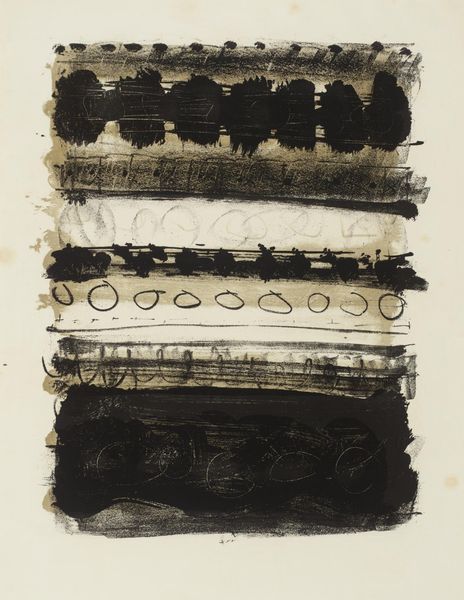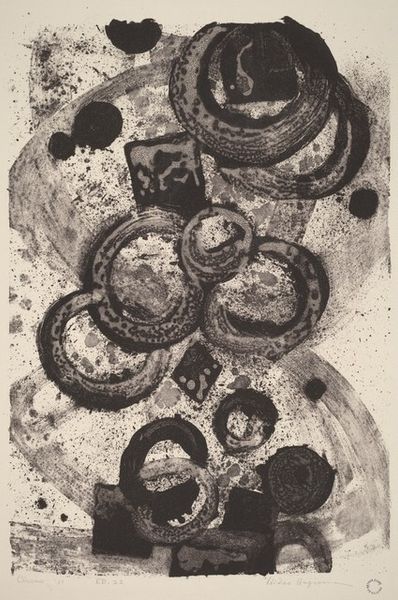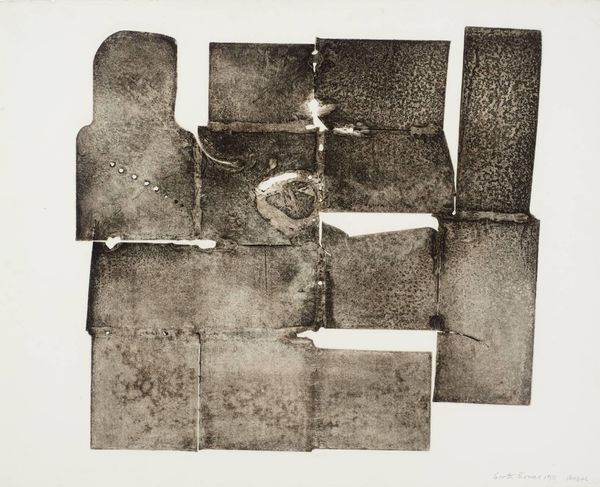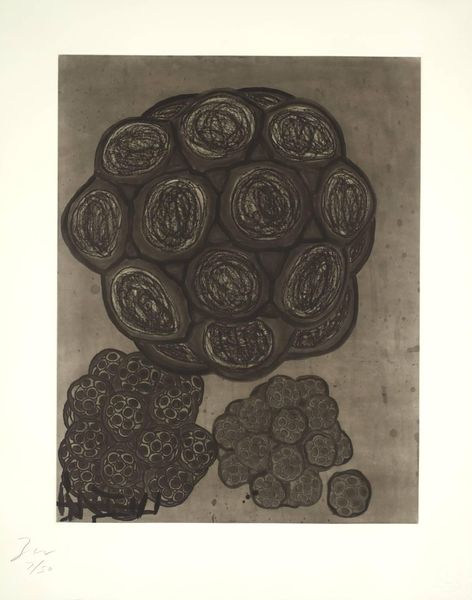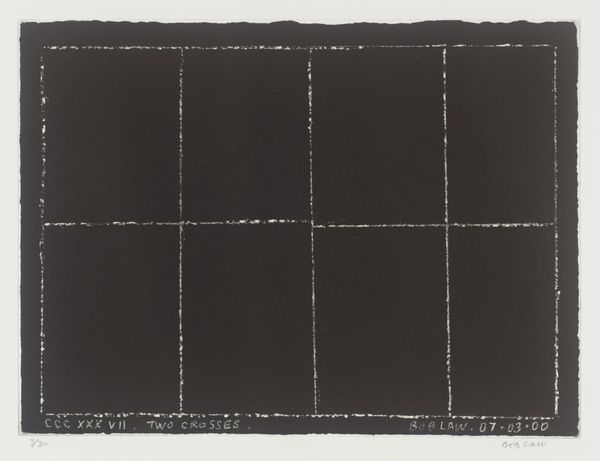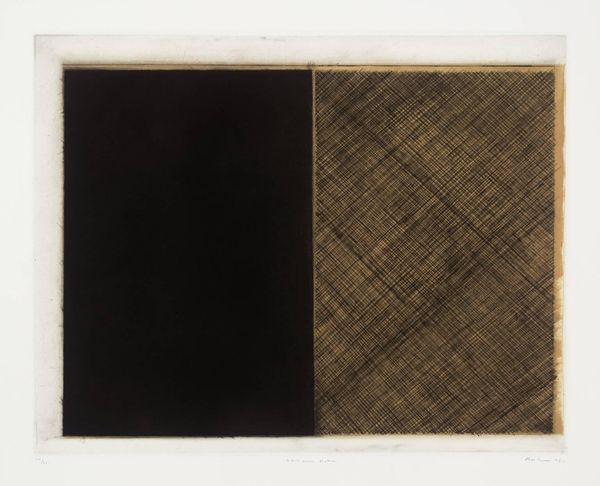
Dimensions: image: 1092 x 825 mm
Copyright: © Terry Winters | CC-BY-NC-ND 4.0 DEED, Photo: Tate
Curator: Before us, we have Terry Winters’ “Morula II,” held within the Tate Collections. Winters was born in 1949, and in this piece, we see a collection of black spheres dominating the composition. Editor: They feel like cells viewed under a microscope, magnified and imposing. There's a stark, almost ominous quality to their size and darkness. Curator: Winters’ work often delves into the intersection of science and art, exploring microscopic biological forms, referencing the cellular and the organic, evoking broader discussions about the body. Editor: And that texture! The contrast between the smooth, almost ghostly background and the densely layered black circles suggests a painstaking, almost obsessive process. What materials did he employ to achieve that depth? Curator: Indeed, considering Winters' recurring exploration of growth and decay, the “Morula” stage – an early-stage embryo – becomes a potent symbol. The black could indicate a transformative, even destructive phase, challenging notions of pristine beginnings. Editor: It’s a stark reminder of the physical processes underpinning existence, brought to the surface through labor and the manipulation of materials. It's a compelling, if somewhat unsettling, image. Curator: Absolutely, it prompts us to contemplate our own cellular realities and the forces shaping our identities.
